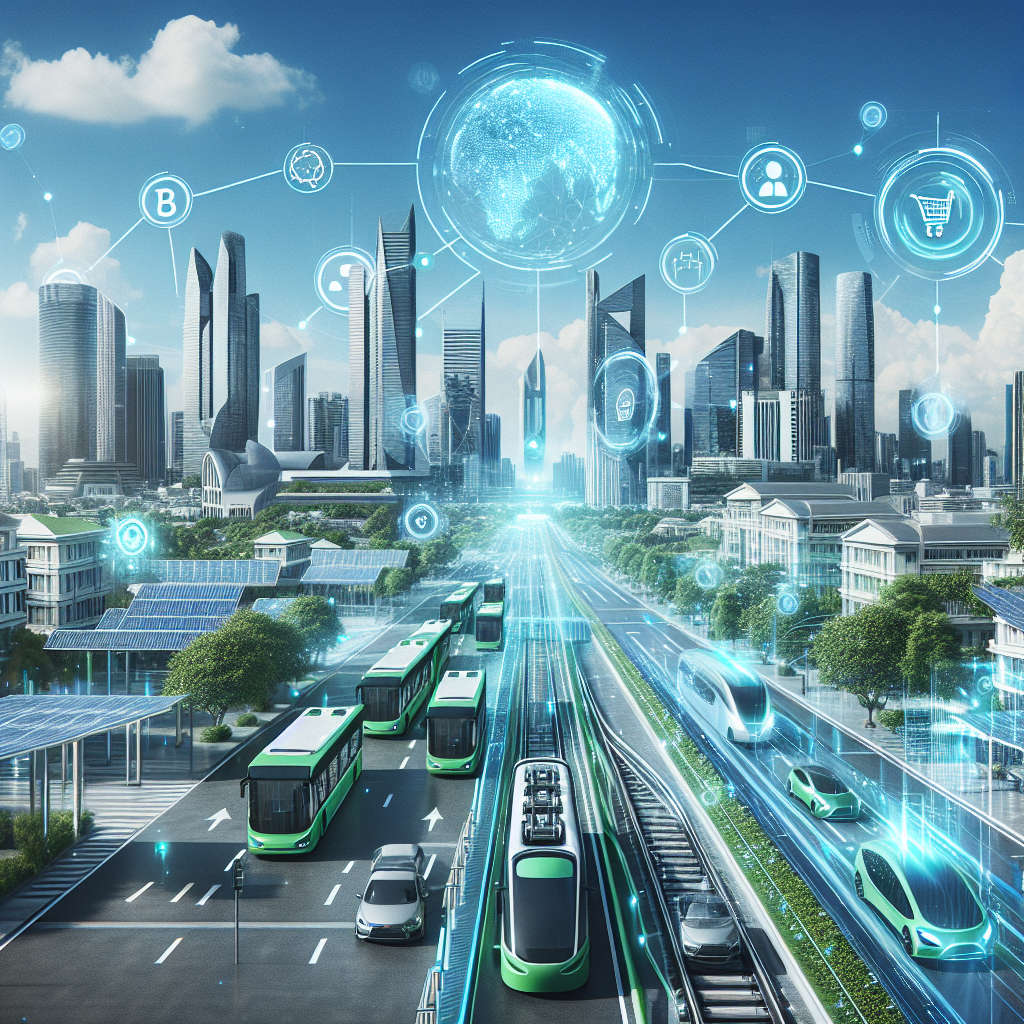The Future of Sustainable Transportation with AI
Introduction
Sustainable transportation is becoming increasingly important as the world faces the challenges of climate change, air pollution, and traffic congestion. As a result, there is a growing interest in finding innovative solutions to make transportation more environmentally friendly and efficient. Artificial intelligence (AI) is playing a crucial role in transforming the future of sustainable transportation by enabling smarter, more efficient, and more sustainable systems.
AI in Transportation
AI is being integrated into various aspects of transportation to improve efficiency, safety, and sustainability. One of the key areas where AI is making a significant impact is in traffic management. AI-powered traffic management systems can analyze real-time data from various sources, such as cameras, sensors, and GPS devices, to optimize traffic flow, reduce congestion, and minimize emissions.
AI is also being used to optimize route planning and scheduling for public transportation systems, reducing travel times and energy consumption. By analyzing historical data and real-time information, AI algorithms can identify the most efficient routes, predict demand, and adjust schedules dynamically to meet passenger needs.
Another important application of AI in transportation is in autonomous vehicles. Self-driving cars and trucks are becoming a reality, thanks to advances in AI and sensor technologies. Autonomous vehicles can reduce accidents, improve traffic flow, and lower emissions by optimizing driving behavior and routes. AI algorithms enable autonomous vehicles to navigate complex environments, interpret traffic signs and signals, and make real-time decisions to ensure safe and efficient travel.
AI is also being used to optimize energy consumption in transportation. By analyzing data on vehicle performance, traffic conditions, and weather forecasts, AI algorithms can optimize fuel consumption, reduce emissions, and extend the range of electric vehicles. AI-powered energy management systems can adjust vehicle settings, such as speed, acceleration, and air conditioning, to minimize energy consumption and maximize efficiency.
The Future of Sustainable Transportation with AI
The future of sustainable transportation with AI is promising, as technology continues to advance and new applications are developed. AI-powered transportation systems will play a key role in reducing emissions, improving energy efficiency, and enhancing the overall sustainability of transportation.
One of the key trends in the future of sustainable transportation with AI is the integration of different modes of transportation. AI algorithms can analyze data on traffic patterns, user preferences, and environmental conditions to optimize multi-modal transportation systems. By combining public transportation, ride-sharing, cycling, and walking, AI-powered systems can provide seamless and efficient transportation options that reduce the reliance on private cars and promote sustainable mobility.
Another important trend in the future of sustainable transportation with AI is the development of smart cities. AI-powered transportation systems will be integrated into smart city infrastructure to enable real-time monitoring, analysis, and optimization of transportation networks. By connecting vehicles, traffic signals, parking systems, and public transportation services, AI-powered smart cities can reduce congestion, improve air quality, and enhance the overall quality of life for residents.
AI will also play a crucial role in promoting electric and autonomous vehicles in the future of sustainable transportation. By analyzing data on vehicle performance, charging infrastructure, and user behavior, AI algorithms can optimize the adoption and deployment of electric and autonomous vehicles. AI-powered systems can recommend the most suitable electric vehicles for different use cases, identify optimal locations for charging stations, and predict demand for autonomous vehicle services.
FAQs
Q: How does AI help reduce emissions in transportation?
A: AI helps reduce emissions in transportation by optimizing traffic flow, route planning, and energy consumption. AI-powered systems can analyze data on vehicle performance, traffic conditions, and weather forecasts to minimize fuel consumption, reduce emissions, and promote sustainable transportation practices.
Q: How does AI improve safety in autonomous vehicles?
A: AI improves safety in autonomous vehicles by enabling real-time monitoring, analysis, and decision-making. AI algorithms can detect potential hazards, interpret traffic signs and signals, and predict the behavior of other road users to ensure safe and efficient travel. AI-powered autonomous vehicles can reduce accidents, improve traffic flow, and enhance overall road safety.
Q: What are the benefits of AI in sustainable transportation?
A: The benefits of AI in sustainable transportation include reduced emissions, improved energy efficiency, enhanced safety, and increased mobility options. AI-powered transportation systems can optimize traffic flow, route planning, and energy consumption to promote sustainable transportation practices and enhance the overall quality of life for residents.
Conclusion
The future of sustainable transportation with AI is bright, as technology continues to evolve and new applications are developed. AI-powered systems will play a crucial role in transforming transportation networks, reducing emissions, improving energy efficiency, and enhancing the overall sustainability of transportation. By integrating AI into traffic management, route planning, autonomous vehicles, and energy management, sustainable transportation systems can become smarter, more efficient, and more environmentally friendly. As AI technology continues to advance, the future of sustainable transportation with AI holds great promise for creating a more sustainable and livable world.

